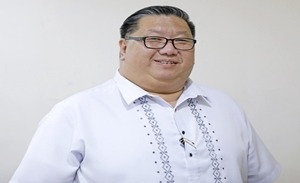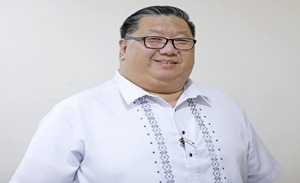FRESH VIEWPOINTS: A NEW PERSPECTIVE
By Brian James Lu

Once again marking a first for the Philippines, Quezon City Mayor Joy Belmonte inaugurated the Tandang Sora Museum, the country’s first women’s museum. Its location on Banlat Road holds deep historical significance, as it is the birthplace of Melchora Aquino, widely known by her revolutionary name, Tandang Sora.
Mayor Belmonte emphasized, “This museum is more than just a collection of artifacts—it stands as a testament to the strength, struggles, and triumphs of Filipino women throughout history. Through its exhibits, we hope to inspire the next generation to continue advocating for equality, justice, and progress.”
The establishment of a women’s museum is a groundbreaking initiative, highlighting the vital roles women have played in shaping Philippine history. Throughout the nation’s past, women have been at the forefront of revolutionary movements, advocacy, and leadership. Tandang Sora, revered as the “Mother of the Philippine Revolution,” is a prime example of this legacy. As we reflect on history, let us honor her invaluable contributions to Philippine nationhood and recognize the enduring impact of women in the country’s fight for freedom and progress.
Tandang Sora is known as the “Mother of the Philippine Revolution” for her invaluable contributions to the Katipunan during the fight for independence against Spanish rule. Despite being in her 80s, she played a crucial role in supporting the revolutionaries by providing shelter, caring for the wounded and sick, and supplying food and essential resources. Beyond material aid, she offered moral support and guidance, using her wisdom and influence to inspire Katipuneros to persevere in their struggle for freedom.
Due to her involvement in the revolution, Spanish authorities arrested Tandang Sora and subjected her to intense interrogation, attempting to extract information about the Katipunan. However, she refused to betray the revolutionaries, standing firm in her loyalty to the cause. As punishment, she was deported to Guam alongside other revolutionaries. She remained in exile until the end of Spanish colonial rule, after which she finally returned to the Philippines.
Filipino women played a vital role in the struggle against Spanish colonial rule, serving as revolutionaries, spies, medics, and key supporters of the Katipunan. Many actively participated in the secret revolutionary society, with some even joining its women’s chapter. Gregoria de Jesus, known as the “Lakambini of the Katipunan,” safeguarded critical documents, provided strategic support, and ensured the safety of fellow revolutionaries.
Meanwhile, Gabriela Silang took on a leadership role in armed resistance, leading revolts against Spanish forces.
Beyond the battlefield, revolutionary women worked behind the scenes, carrying messages, raising funds, and tending to the wounded—proving their indispensable role in the fight for independence. Beyond direct combat, women played a significant role in sustaining the revolutionary movement through their intellectual and emotional contributions. They organized resistance efforts, participated in propaganda campaigns, and educated fellow Filipinos about their rights and the need for independence. Many women also engaged in subversive activities, such as smuggling weapons and supplies or serving as informants against Spanish forces. Despite the constraints of a patriarchal society, Filipina revolutionaries proved that they were not merely passive observers but active agents of change, significantly shaping the country’s fight for freedom.
The Women’s Museum goes beyond preserving revolutionary memorabilia. It features the “Women in Action” gallery, which displays progressive materials and artifacts from various feminist movements, showcasing the resilience and activism of women’s organizations that have shaped the country’s socio-political landscape.
There is also the “HERstorical Philippine Timeline” that showcases women’s contributions to faith, leadership, peacebuilding, and revolution. This exhibit highlights the Babaylan as spiritual leaders, the emergence of women-led labor unions, and the growing involvement of women in politics, the arts, science, and media.
This groundbreaking museum was made possible with the support of Senator Risa Hontiveros, a longtime advocate for women’s rights. In her keynote address, she stated, “This museum is not just about remembering history—it’s about empowering women today and in the future. We honor the legacies of those who came before us and pave the way for those who will come after.”
Filipinos should visit the Tandang Sora Women’s Museum to gain a deeper understanding of the significant contributions of women in Philippine history.
As we honor the contributions of Filipino women in our history, let us also recognize and celebrate them on International Women’s Day (IWD). Dating back to the early 20th century, IWD is rooted in the labor and feminist movements advocating for women’s rights, fair wages, and better working conditions. The first National Women’s Day was observed in the United States on Feb. 28, 1909, following a declaration by the Socialist Party of America. A year later, German activist Clara Zetkin proposed an annual global observance during the International Socialist Women’s Conference in 1910. The idea quickly gained traction, leading to the first International Women’s Day celebration on March 19, 1911, in countries such as Austria, Denmark, Germany, and Switzerland, where demonstrations demanded voting rights, labor protections, and gender equality.
Through the decades, International Women’s Day evolved into a global movement advocating for women’s empowerment, equality, and human rights. The United Nations officially recognized March 8 as International Women’s Day in 1977, encouraging member states to adopt policies promoting gender equality. It is interesting to note that March 8 was chosen as International Women’s Day in recognition of the women textile workers in New York City who, on March 8, 1857, marched in protest against unfair working conditions and gender inequality. During the demonstration, they demanded a shorter workday and fair wages, marking a pivotal moment in the fight for women’s labor rights.
Today, IWD is marked by rallies, educational campaigns, and policy discussions, with themes highlighting pressing issues such as gender-based violence, economic empowerment, and political representation. While IWD celebrates the achievements of women in various fields, it also serves as a reminder of the ongoing struggles for equal rights and the need for continuous efforts toward a more just and inclusive society.
The Tandang Sora Museum stands as a powerful tribute to the resilience, bravery, and contributions of Filipino women throughout history. More than just a collection of artifacts, it is a space that honors the past, educates the present, and inspires the future. By showcasing the pivotal roles women played in the Philippine revolution, social movements, and nation-building, the museum reinforces the importance of gender equality and the ongoing fight for women’s rights. As we celebrate International Women’s Day, let this museum serve as a reminder that women have always been, and will continue to be, at the heart of shaping our nation’s history and progress.





